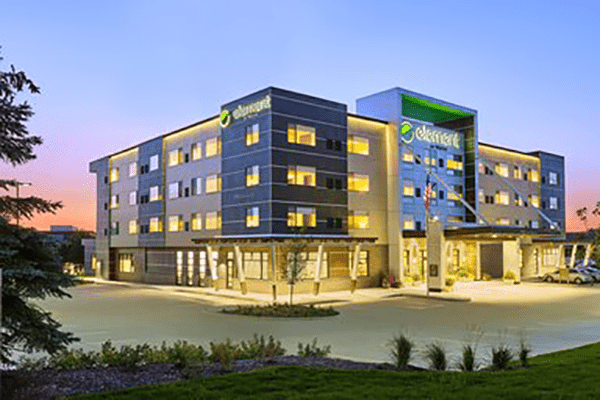Almost 65 percent of Hotels Remain At Or Below 50 Percent Occupancy
By Tina Traster
At what can clearly be called the most challenging time for hoteliers, The Element by Westin at 90 Spring Valley Marketplace opened its 87-room hotel this week. The Element is the latest hotel to open in the county, which pre-COVID, was rapidly growing its tourism industry.
However, hotels, along with restaurants and retail, have been among the hardest hit segments during the coronavirus pandemic, which brought commerce to its knees. HNA on Route 9W in Palisades has shuttered its doors and the boutique Time Hotel in Nyack recently lost its signature restaurant BV’s Grill, replacing it with in-house catering. The Time Hotel, bought less than two years ago, continues to seek offers from prospective buyers to sell the hotel, according to insiders familiar with the dealings.
Element by Westin, a Marriott brand, is a sleek, eco-friendly, extended-stay luxe hotel — the first to bring the boutique-feel from a national brand to the county. Features include apartment-size rooms, fitness center with heated indoor pool, hot breakfast buffet and sleek lobby bar. The Rockland hotel is marketing itself as “an ideal location close to West Point and just off of Interstate 87/287 at exit 14,” said Parakh Dani, director of sales for marketing at Element, and as a convenient location within five miles of several major corporations, including Pfizer, Scapa, AERCO, Teledyne and Salvation Army.
“We believe Rockland is going to be a good fit,” said Dani. “We’re hoping COVID is behind us and we’re looking for a bright future.”
The hotel is hoping to capture a mixture of business travelers and millennials who are looking for minimalist design and an eco-friendly vibe with room rates ranging from $139 to $300.
Whether Element can weather the pandemic storm remains to be seen. Far fewer people are traveling for business these days.
The American Hotel & Lodging Association this week released a report outlining the current state of the industry as the pandemic continues to depress demand. Four in 10 hotel employees are still not working and two-thirds of hotels remain at less than 50 percent occupancy.
When COVID-19 forced a virtual halt to the country, the economy and travel, the hotel industry was one of the first industries affected. It will be one of the last to recover. Even as travel has ticked up slightly six months later, the hotel industry remains on the brink of collapse.
STATE OF THE INDUSTRY
The following report outlines the current state of the industry in terms of employment, consumer travel sentiment, occupancy, and industry trends in August 2020 compared to the immediate impact of the pandemic in March and April 2020.
The report outlines five key issues facing the hotel industry today:
4 Out of 10 Hotel Employees Are Still Not Working
At the peak of the pandemic, nearly nine in ten hotels had to lay off or furlough workers, and the hospitality and leisure industry lost 7.5 million jobs. Despite small gains in employment in May and June driven largely by restaurants and bars reopening, the leisure and hospitality sector is still down 4.3 million job since February. The accommodations sector is left with a devastating unemployment rate of 38 percent compared to the national average of 10.2 percent.
Almost 65 percent of Hotels Remain at or Below 50 Percent Occupancy
That’s below the threshold at which most hotels can break even and pay debt. While leisure travelers have increased average hotel occupancy since the historic low of 24.5 percent in April, thousands of hotels are at risk of closure or are unable to hire back staff due to continuing, drastically low hotel occupancy rates.
Consumer Travel Remains at All-Time Low
Only 33 percent of Americans say they have traveled overnight for leisure or vacation since March, and only 38 percent say they are likely to do so by the end of the year.
Industry’s Leading Employers – Urban Hotels – Face Collapse with Cripplingly Low Occupancies
Urban hotels are major employers due to their size. But these properties are faring significantly worse than the national average, with an occupancy rate of just 38 percent. Jobs at urban hotels are unlikely to return without either a dramatic increase in occupancy – which is unlikely – or additional Congressional action.
COVID’s Impact on Hotel Industry Felt in Major Cities Across The Country
COVID has left hotels in major cities across the country struggling to stay in business, resulting in massive job loss and dramatically reducing state and local tax revenue for 2020 and beyond.
Read Also: Hoteliers Are Hot On Rockland County;2020 Could See More Than 200 Rooms Added, Included 89 By Element By Westin in Spring Valley, December 9, 2019






